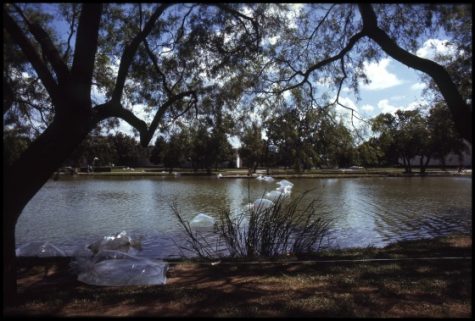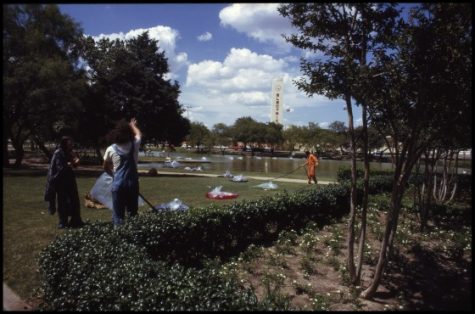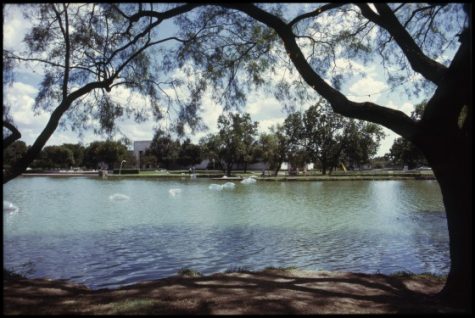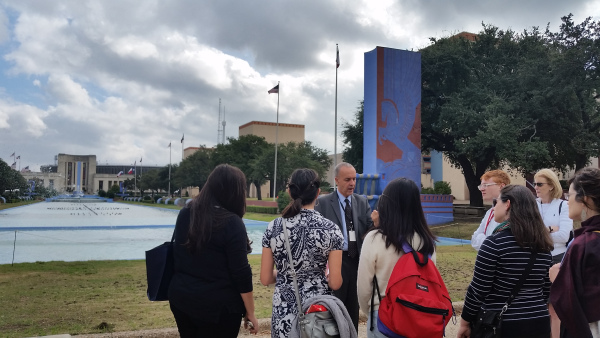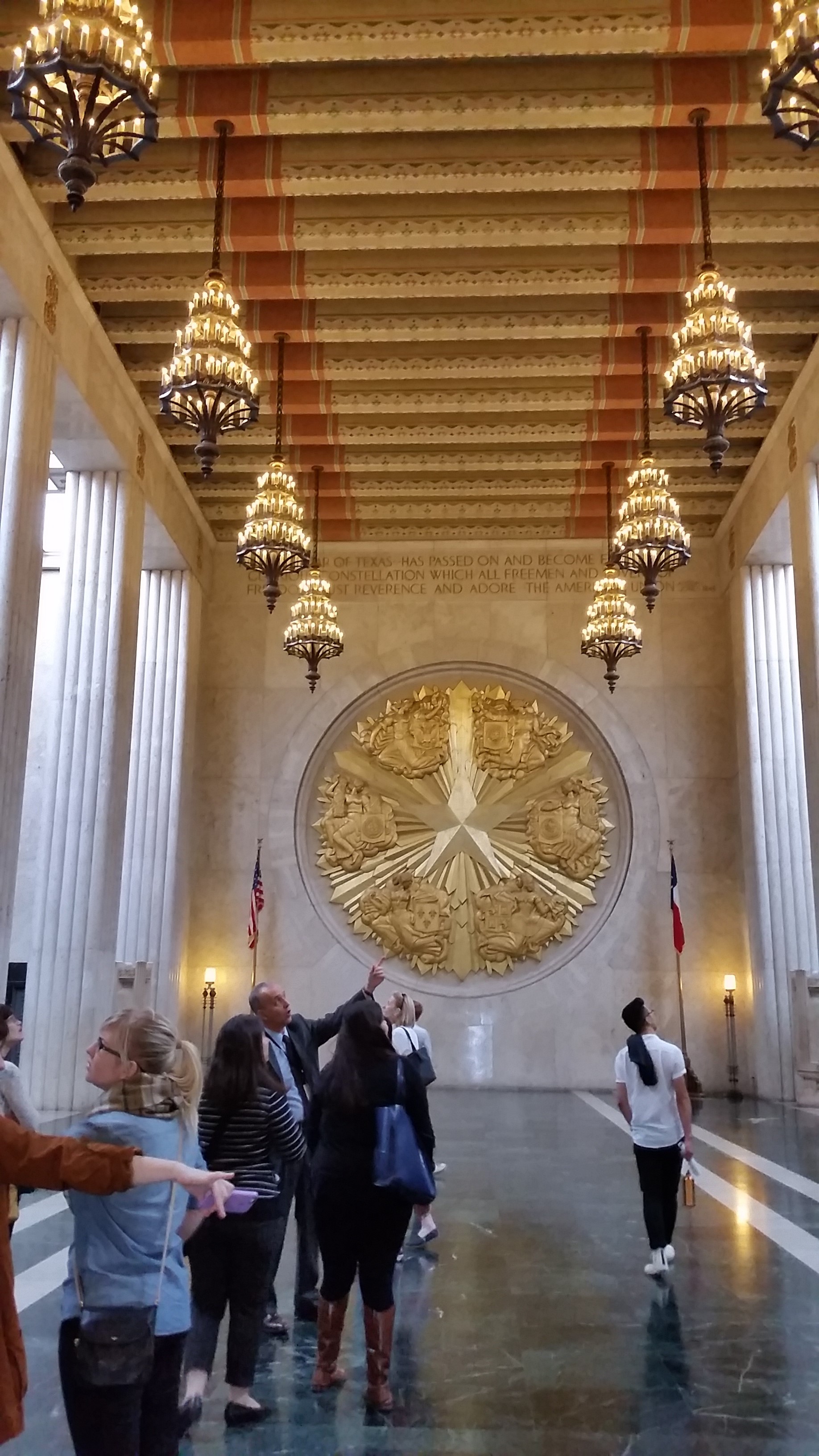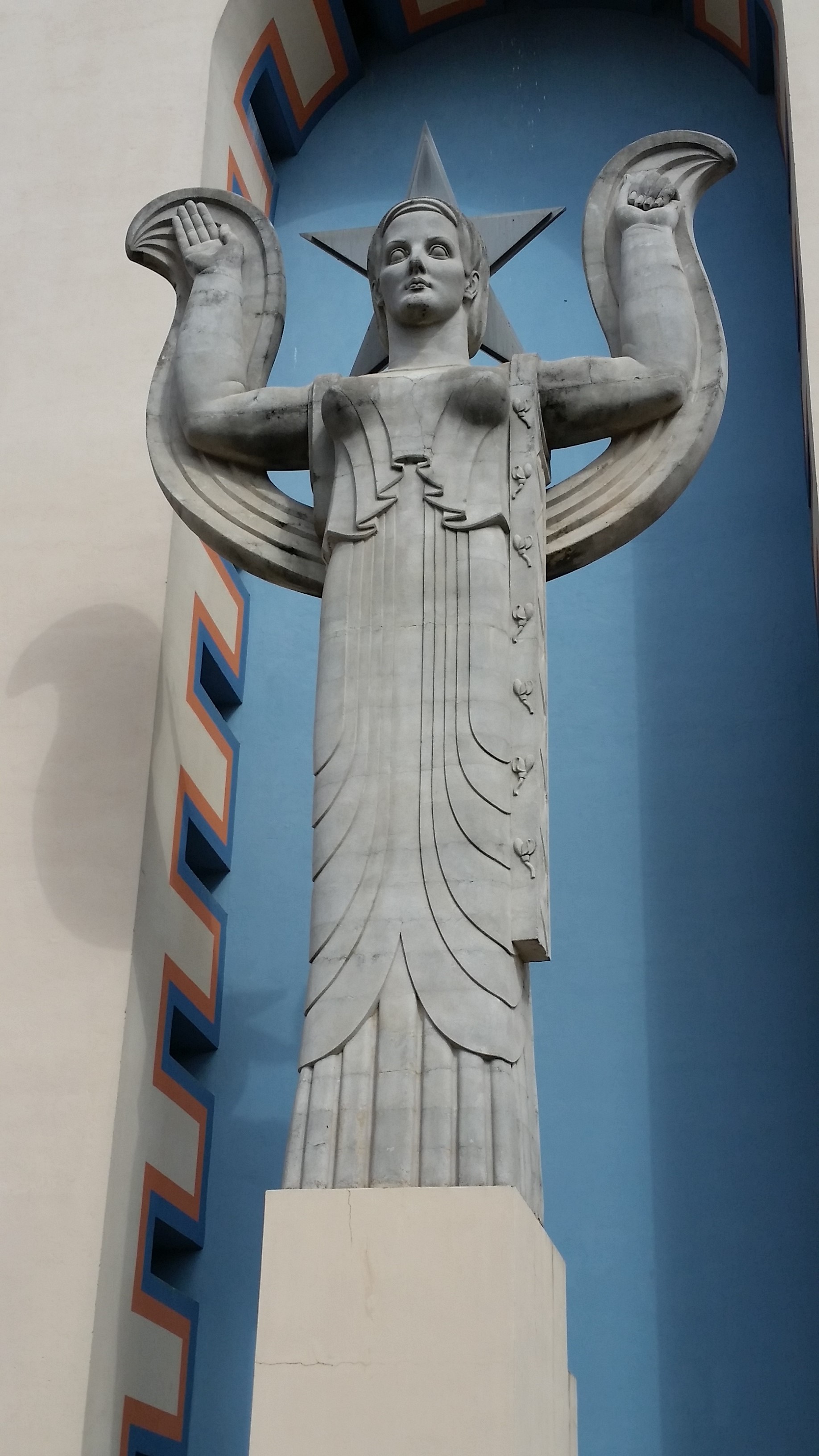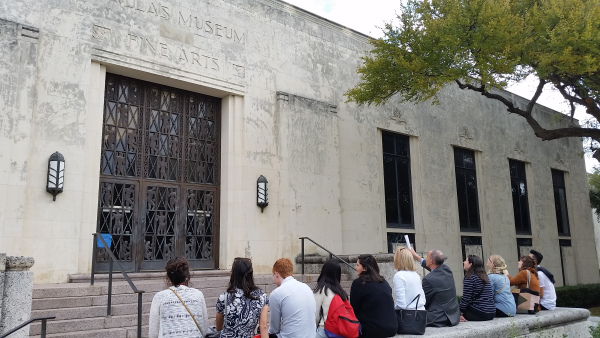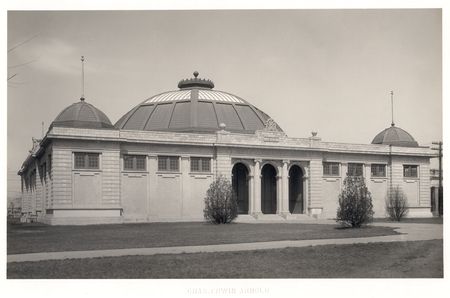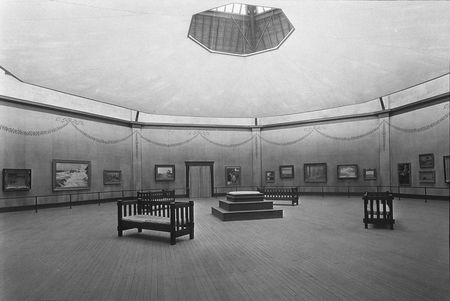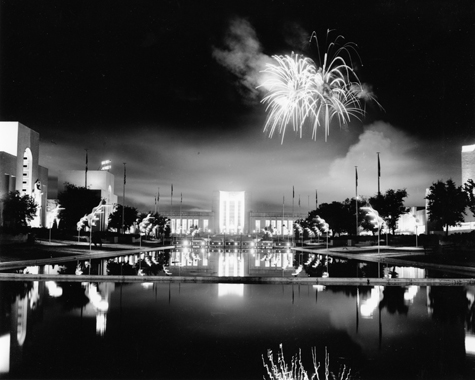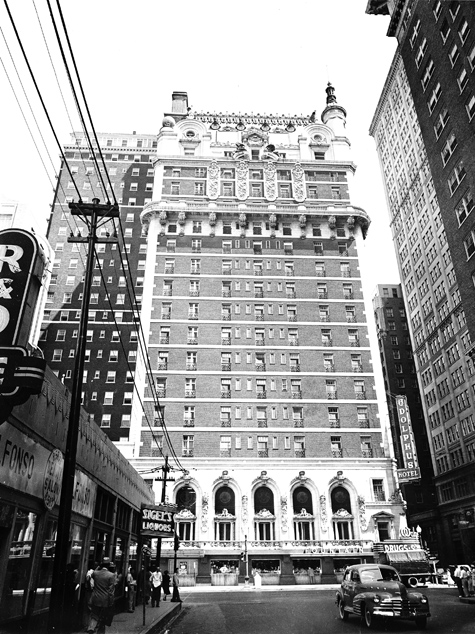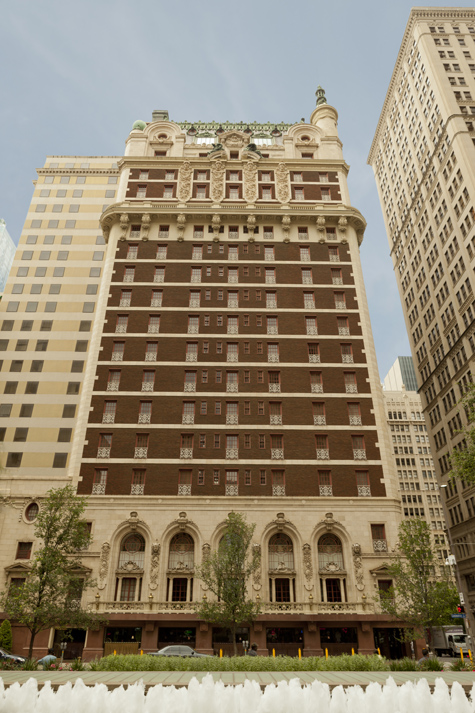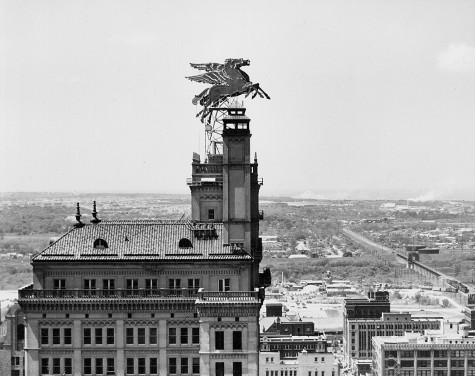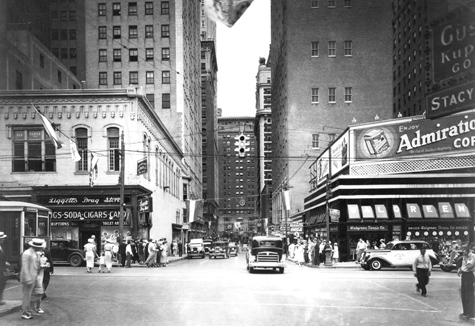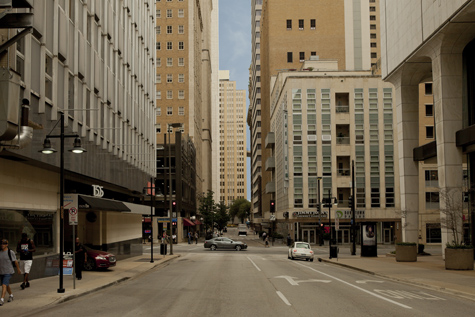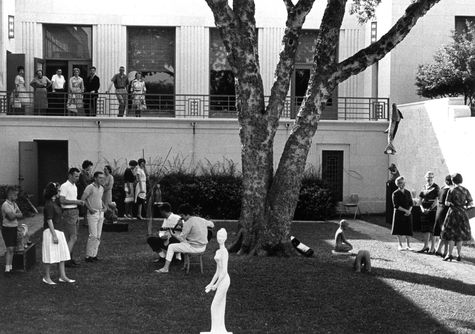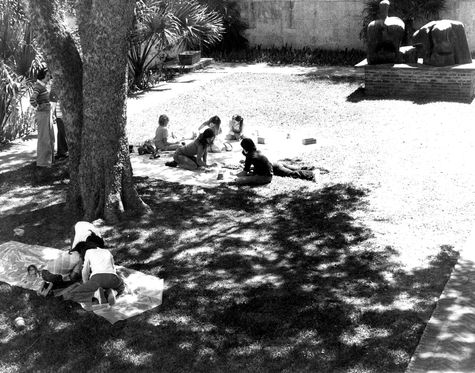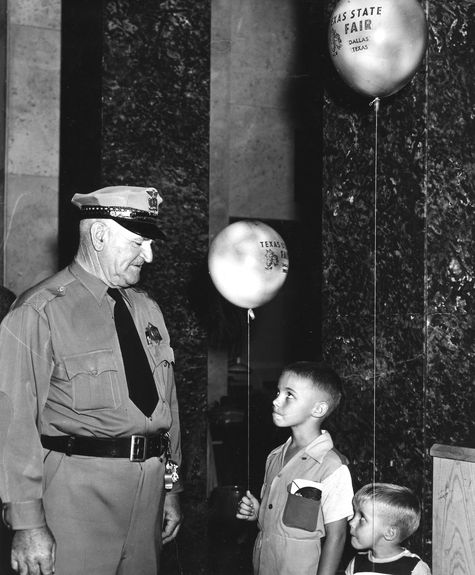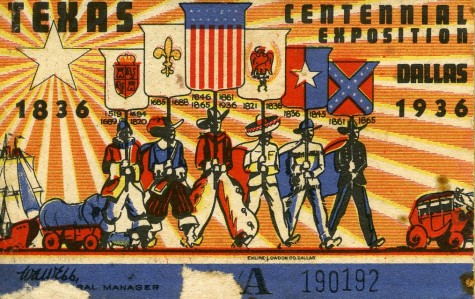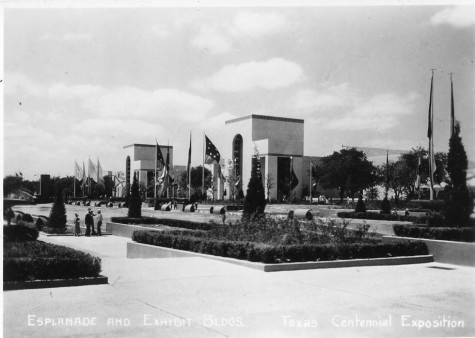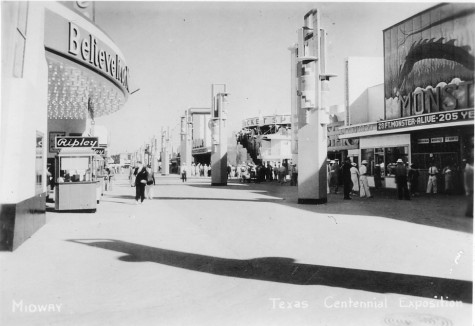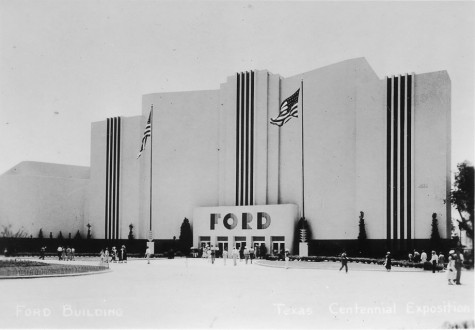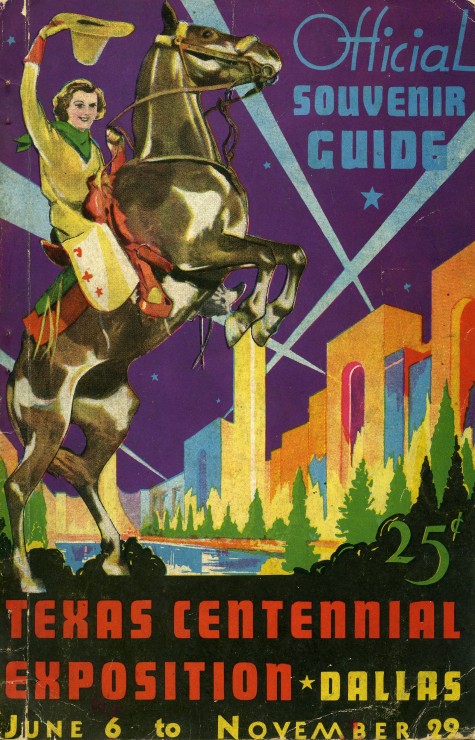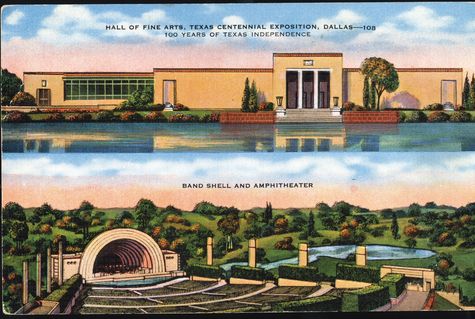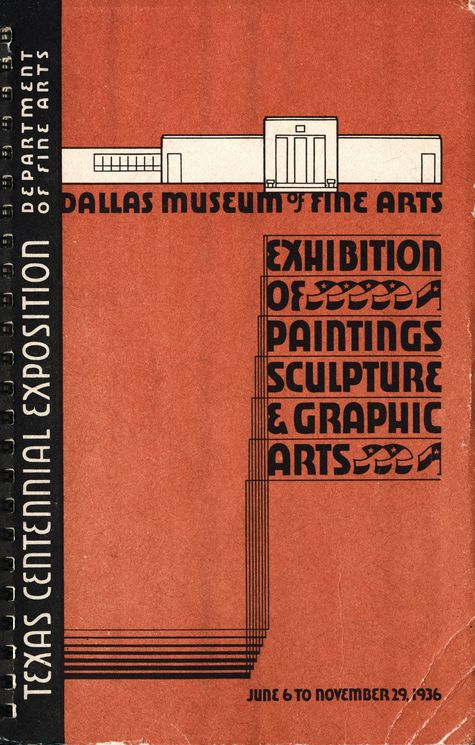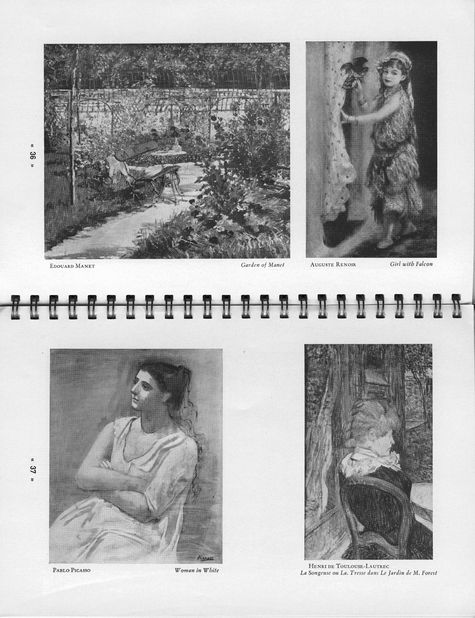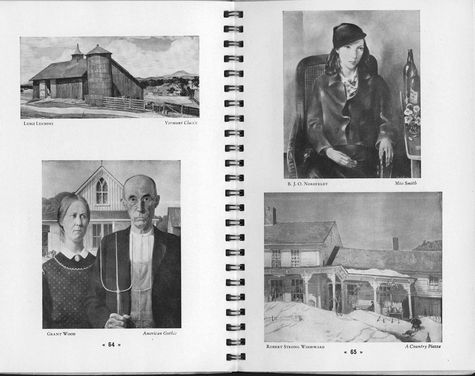How do you navigate your way in a new city’s art community? That became my challenge when I moved from Philadelphia to Dallas in September 2012 to become the new McDermott Curatorial Intern for Contemporary Art. Of course, I did my research: numerous Google searches helped me make a page-long list of contemporary art venues I wanted to visit during my internship. But assisting on the DMA’s newest exhibition, DallasSITES: Charting Contemporary Art, 1963 to Present, was what really taught me about Dallas’s artistic legacy.
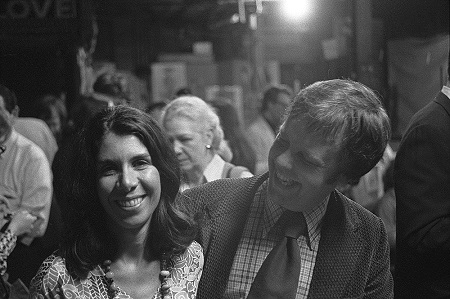
Two members of the Dallas art scene who have been influential for decades: Janet Kutner and Paul Rogers Harris, c.1960s, Courtesy of Paul Rogers Harris, Dallas, TX
I’ve spent the past nine months combing through archives, researching galleries, and learning about the evolution of the Dallas art scene. The exhibition, consisting mainly of ephemera from the past fifty years, will illustrate how dynamic the art community of North Texas has been. As a recent transplant, this project became my personal crash course. This history lesson served me well.
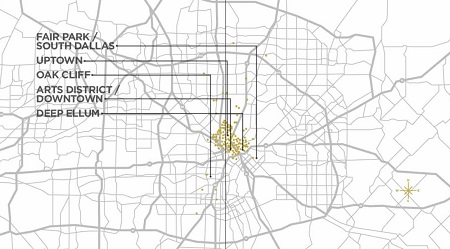
Map of Dallas, Courtesy of Swoon the Studio, Dallas, TX
Dallas itself is a large city, and over the years the art scene has concentrated in different neighborhoods. Artists were extremely active in Fair Park and Uptown during the 1960s and 70s. With the establishment of the Arts District in the 80s, many art-related activities migrated to downtown. Deep Ellum became a serious locus for the arts in the 80s as well. Today, many galleries and institutions have relocated to the Design District. Interestingly, artist activity continued in all of these neighborhoods even when the larger cultural trends shifted. Meanwhile, universities produce interesting programs and bring important artists to visit and work in North Texas. The ephemera on view in DallasSITES reflect these events.
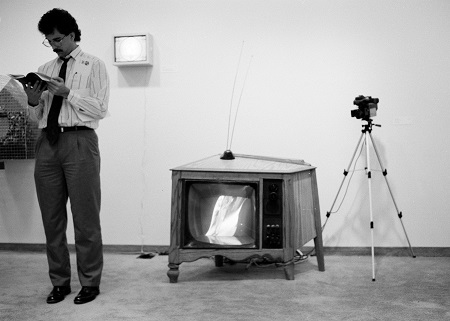
A visitor at the 1989 Dallas VideoFest, Courtesy of the DMA Archives
Some fun facts learned from this project:
Q: What is the oldest continuously running gallery in Dallas? A: Valley House Gallery & Sculpture Garden, established in 1955. Q: What is the oldest and largest video festival in the United States? A: Dallas’s own VideoFest! First held in 1986 at the Dallas Museum of Art, it provides a platform for experimental video art and Texas artists.
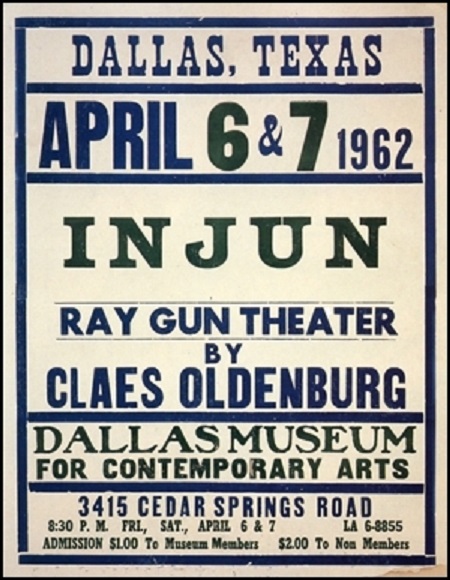
Claes Oldenburg, poster for Injun happening at the Dallas Museum for Contemporary Arts, April 6-7, 1962
Claes Oldenburg is an iconic artist of the pop art movement, but did you know that in 1962 he staged one of his famous “happenings” in Dallas? Injun became a two-day collaboration with local artists at the Dallas Museum for Contemporary Arts (which merged with the Dallas Museum of Fine Arts in 1963 to form the Dallas Museum of Art). That was a fun discovery! Oldenburg’s relationship with Dallas has continued for several decades. Further, I discovered that one of my favorite artists, Oliver Herring, participated in a 1997 group show called Termite Terrace at Angstrom Gallery in Dallas’s Fair Park neighborhood. When DallasSITES opens, visitors will truly see how active this community has been. One of the best parts of contemporary art is the opportunity to meet artists and other art lovers at openings and talks. Each month, there are dozens of exhibition openings, artist talks, and panels that keep Dallas exciting. There are established museums, commercial galleries, and temporary spaces ranging from empty storefronts to an artist’s living room. Artists from across the United States and even internationally are showing in nearby spaces, while the roster of local talent continues to grow.

Dallas’s art scene in action: A packed house at CentralTrak for its NEXT TOPIC series panel “Creating an Art Community/Scene” on May 2, 2013, Courtesy of Sally Glass and CentralTrak, Dallas, TX
When you see all the ephemera in DallasSITES presented in one room, the cultural wealth of this city becomes readily apparent. On May 26, you, too, can experience a crash course of your own for free!
Alexander Unkovic is the McDermott Curatorial Intern for Contemporary Art at the DMA.
